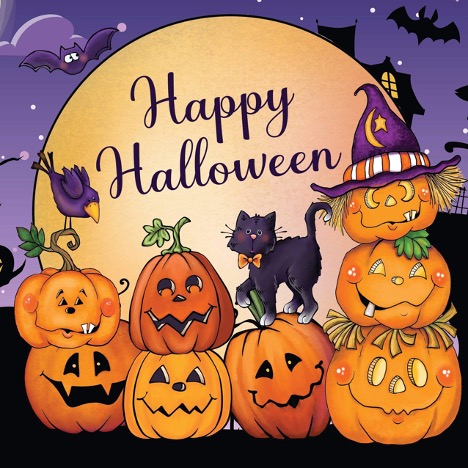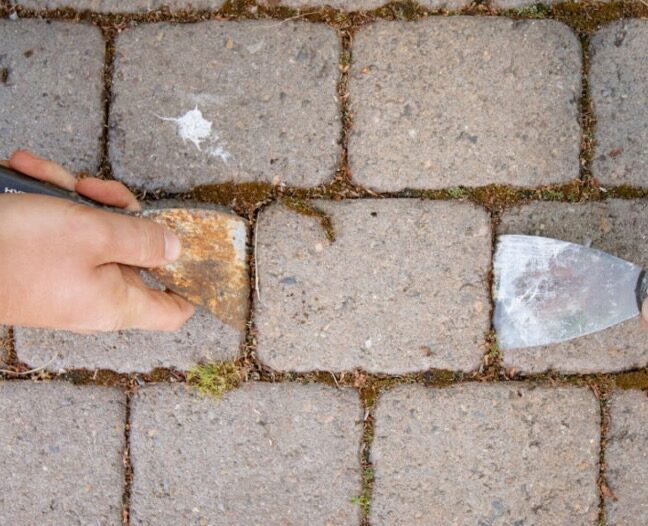
Over the centuries, everyone’s favorite spooky holiday has evolved from a festival with religious origins to a night dedicated to mischief and mayhem to one of the most commercialized celebrations of the year.
The holiday dates back more than 2,000 years. Halloween is even older than Christianity itself. It all started as a pre-Christian Celtic festival called Samhain, which means “summer’s end.” Held in the beginning of November, the feast recognized the last day of the fall harvest and spirits crossing over, because they believed the veil between the living and spirit world grew thinnest at that time. According to History.com, people in Ireland, the United Kingdom, and Northern France used to ward off ghosts by lighting sacrificial bonfires and wearing costumes to trick the spirits.
Trick-or-treating has existed since medieval times. Taking candy from strangers on one night a year (and one night only!) isn’t a new or uniquely American tradition. Back then, it was known as “guising” in Scotland and Ireland. Young people dressed up in costumes and went door-to-door looking for food or money in exchange for performing songs, poems, or other “tricks.” Today, the tradition has morphed into children getting dressed up and asking for candy. Hardly anyone sings for their mini-Snickers these days — but a simple “thank you” will go a long way.
Some Halloween rituals used to be geared toward finding a husband. During the 18th century, single ladies devised Halloween traditions to help them meet their romantic match. Women threw apple peels over a shoulder, hoping to see their future husband’s initials in the pattern made when they landed. When bobbing for apples at parties, the winner would marry first. Most spookily, women even stood in a dark room, holding a candle in front of a mirror to look for their future husband’s face to appear in the glass.
Immigrants helped popularize the holiday in the U.S. When the Irish fled the potato famine that devastated their country in the 1840s, they brought their Halloween traditions with them. The celebration spread across the country, until the mischievous Halloween pranksters reached an all-time high in the 1920s. Some believe community-based trick-or-treating became popular in the 1930s to control the many pranksters.
The Irish brought us jack-o’-lanterns. As the story goes, an Irish man named Stingy Jack tricked the devil and therefore was not allowed into heaven or hell — so he spent his days roaming the Earth carrying a lantern; hence the name “Jack of the Lantern.”
Jack-o’-lanterns were originally carved out of turnips, potatoes, and beets. They did originate in Ireland, after all. Once Halloween became popular in America, people used local produce like pumpkins instead. This year, you might consider adding some creative carvings to your Halloween tableau for a more natural look that also has historical origins. When the holiday’s over, they make a delicious dinner side dish!
There’s also a traditional Halloween bread in Ireland. It’s called barmbrack or just “brack.” The sweet loaf typically contains dark and golden raisins, as well as a small hidden toy or ring. Similar to the classic king cake at Mardi Gras, tradition dictates that the person who finds the item will come into good fortune in the coming year. That is, if they don’t choke on the trinket.
Sugar rationing during World War II paused trick-or-treating. Because of the shortage of the sweet stuff, trick-or-treating wasn’t as big during WWII. After the rationing ended, it was all systems go on the candy-collecting front. Candy companies began launching advertising campaigns to cash in on the ritual and make sure kids were clamoring for their products to show up in their candy buckets and spare pillowcases.
Today Halloween is the second-largest commercial holiday in the country. Only Christmas rakes in more money. Consumers spent approximately $9 billion on Halloween in 2019, according to the National Retail Federation. Spending was down a bit in 2020 because of the COVID-19 pandemic, but Americans still forked over $8 billion overall or an average of $92 per person.
Illinois produces up to five times more pumpkins than any other state. If you’re in the market for a truly destination-worthy pumpkin patch, head to the heartland. The Land of Lincoln has more than 15,000 acres devoted to gourd growing, according to the United States Department of Agriculture. Those Illinois farms typically grow more than 500 million pounds of pumpkins annually.
Candy corn was originally called “chicken feed.” According to National Geographic, the Goelitz Confectionery Company originally sold the polarizing treat in boxes with a rooster on the front in order to appeal to America’s agricultural roots. The sugary recipe has gone largely unchanged since the 1880s. Love them or hate them you can’t argue with that kind of consistency.
The Michael Myers mask in Halloween has a fascinating backstory. The famous horror movie villain comes from surprisingly innocent roots. When shooting the original 1978 film, production designer Tommy Lee Wallace picked up two masks from a Hollywood Boulevard magic shop: a clown mask and William Shatner as Captain Kirk in Star Trek.
“Tommy came on the set with the clown mask on, and the crew went, ‘Ooh, that’s kind of scary.’ Then he put on the Shatner mask, and everyone stopped dead and said, ‘It’s perfect,’ ” actor Nick Castle told the New York Times. They spray painted it white, made the eye holes bigger and the rest is spine-tingling history.
The fastest pumpkin carving ever only took 16.47 seconds. New Yorker Stephen Clarke holds the Guinness Book of World Records distinction, having speedily carved his lantern in October 2013. To nab the title, the jack-o’-lantern had to contain a complete face, including eyes, nose, mouth, and ears. No word on whether the expression was silly or scary.
New York City throws the biggest Halloween parade in the U.S. On an average year, the event draws more than 2 million spectators and includes thousands of participants joining in as the route winds through Greenwich Village. It all began as the brainchild of Greenwich Village resident and puppeteer Ralph Lee, who just wanted to have a whimsical walk from house to house for his kids and their pals. When a local theatre got wind of it, they joined in and expanded the event. It’s become larger, more creative, and more theatrical just about every year since.
Princesses and superheroes rank as the most popular kids’ costumes. Adults dress as witches most frequently, according to the National Retail Federation. In 2019, the most popular costume for dogs was a pumpkin. The most popular costume for cats is hiding under the couch, hissing at the very idea.
Skittles are the top Halloween candy. No chocolate? No problem! The bite-sized fruit candies outranked M&M’s, Snickers, and Reese’s Cups, according to eleven years of sales data from CandyStore.com. And even though candy corn made the top 10, the tricolored treats also ranked among the worst Halloween candies, according to a CandyStore.com survey. No wonder Halloween night candy trades get so intense.
Harry Houdini died on Halloween in 1926. The famous magician, illusionist, and entertainer died from peritonitis caused by a ruptured appendix, according to Biography.com. However, as befits a man of mystery, multiple contradicting reports surfaced at the time. Some say a band of angry Spiritualists poisoned him, others that it was a student punching him in the stomach (with his permission) that caused his appendix to burst. Whatever happened, we can all agree that dying on Halloween was very on-brand.
Some shelters used to suspend black cat adoptions for Halloween. They feared that the animals were in danger from Satanic cults that wanted them for nefarious purposes in the days leading up to Halloween. Now though, shelters have gone in the opposite direction. Many even promote black cat adoptions in October, using the pre-adoption screening and interview process to weed out anyone with less-than-snuggly intentions.
Keene, New Hampshire, holds the record for the most jack-o’-lanterns on display. In October 2013, the city broke the record with 30,581 lit pumpkins displayed around town. Talk about lighting up the night!






